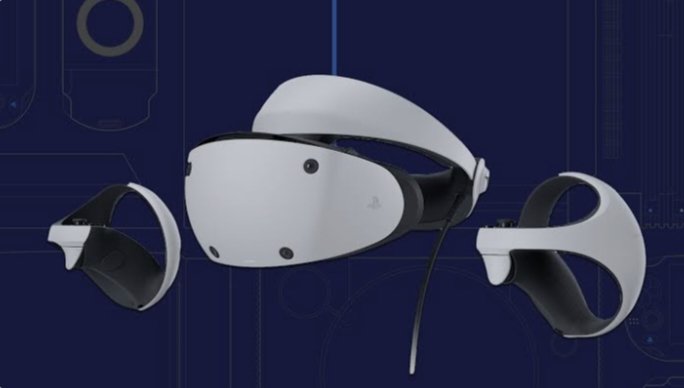The internet has undergone significant transformations since its inception, evolving from a static collection of information (Web 1.0) to a dynamic, user-centric platform (Web 2.0). Now, we stand on the brink of another revolution: Web 3.0. This new phase promises to redefine our digital experiences by integrating advanced technologies like blockchain, artificial intelligence, and the decentralized web. In this article, we’ll delve into what Web 3.0 is, its key features, potential benefits, and the challenges it faces.

What is Web 3.0?
Web 3.0, also known as the decentralized web, represents the next stage in the evolution of the internet. It aims to create a more intelligent, interconnected, and user-centric web experience. Unlike its predecessors, Web 3.0 is built on the principles of decentralization, enhanced user privacy, and improved security. It leverages blockchain technology to ensure transparency and trust, enabling peer-to-peer interactions without the need for intermediaries.
Key Features of Web 3.0
1. Decentralization
Decentralization is the cornerstone of Web 3.0. Unlike Web 2.0, which relies heavily on centralized servers and databases, Web 3.0 distributes data across a network of nodes. This decentralization reduces the risk of data breaches, censorship, and single points of failure. It empowers users by giving them control over their data and digital identities.
2. Blockchain Technology
Blockchain plays a pivotal role in Web 3.0 by providing a transparent, immutable, and secure ledger for recording transactions and data. Smart contracts, which are self-executing contracts with the terms directly written into code, enable trustless and automated interactions between parties. Blockchain’s decentralized nature ensures that no single entity has control over the entire network, enhancing security and trust.
3. Semantic Web
The semantic web is a crucial component of Web 3.0, aiming to create a more intelligent and interconnected web. It involves the use of metadata, ontologies, and artificial intelligence to enable machines to understand and interpret the context and meaning of information. This allows for more accurate search results, personalized recommendations, and enhanced user experiences.
4. Enhanced Privacy and Security
Web 3.0 places a strong emphasis on user privacy and security. By utilizing encryption, decentralized identities, and zero-knowledge proofs, users can interact with the web without compromising their personal information. This shift towards a more secure and private web is a direct response to the growing concerns over data breaches and privacy violations in the Web 2.0 era.
5. Interoperability
Interoperability is another key feature of Web 3.0. It aims to create a seamless and interconnected ecosystem where different platforms, applications, and services can easily communicate and interact with each other. This will enable users to move their data and assets across various applications without friction, fostering innovation and collaboration.
Potential Benefits of Web 3.0
1. Empowering Users
Web 3.0 empowers users by giving them control over their data and digital identities. With decentralized identities, users can choose what information they share and with whom, reducing the risk of data misuse and identity theft.
2. Reducing Intermediaries
By leveraging blockchain and smart contracts, Web 3.0 eliminates the need for intermediaries in various transactions and interactions. This not only reduces costs but also increases efficiency and transparency in industries such as finance, supply chain, and real estate.
3. Fostering Innovation
The decentralized nature of Web 3.0 fosters innovation by creating an open and permissionless environment. Developers can build and deploy decentralized applications (dApps) without relying on centralized platforms, leading to a more diverse and innovative ecosystem.
4. Enhancing Security
Web 3.0’s focus on decentralization, encryption, and secure protocols enhances overall security. By removing single points of failure and ensuring data integrity through blockchain, the web becomes more resilient to cyberattacks and breaches.
Challenges and Considerations
1. Scalability
One of the primary challenges facing Web 3.0 is scalability. Blockchain networks, while secure and transparent, often struggle with handling a large number of transactions quickly. Solutions like sharding, layer 2 protocols, and consensus algorithm improvements are being explored to address this issue.
2. Usability
For Web 3.0 to gain widespread adoption, it must be user-friendly. Currently, many decentralized applications (dApps) and blockchain platforms have complex interfaces that can be intimidating for non-technical users. Improving usability and user experience is crucial for the success of Web 3.0.
3. Regulatory Concerns
The decentralized nature of Web 3.0 presents regulatory challenges. Governments and regulatory bodies need to develop frameworks that balance innovation with security and compliance. Clear regulations will be essential to address issues like money laundering, fraud, and data privacy.
4. Interoperability Standards
While interoperability is a key goal of Web 3.0, achieving it requires the development of common standards and protocols. Ensuring that different blockchain networks and decentralized applications can seamlessly interact with each other is a complex task that requires collaboration across the industry.
Conclusion
Web 3.0 represents a significant leap forward in the evolution of the internet. By embracing decentralization, blockchain technology, and enhanced privacy and security, it aims to create a more intelligent, user-centric, and interconnected web. While there are challenges to overcome, the potential benefits of Web 3.0 are immense, promising a future where users have greater control over their digital lives and new opportunities for innovation and collaboration emerge. As we continue to explore and develop this next generation of the internet, the vision of a decentralized and user-empowered web comes closer to reality.

